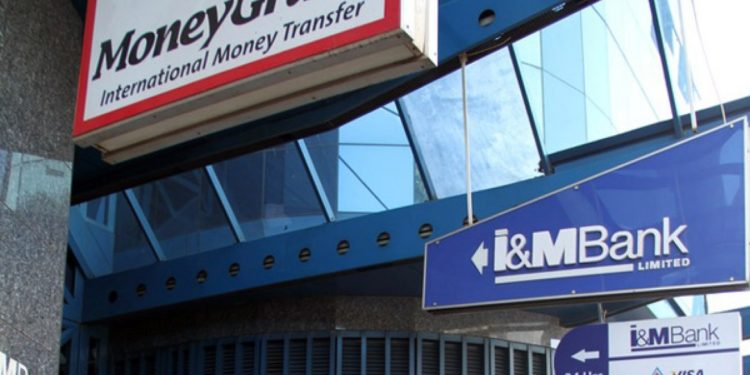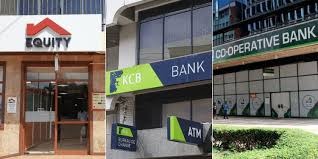I&M Holdings is the most attractive bank in Kenya, supported by a strong franchise value and intrinsic value score. This is according to the 2021 Banking Sector Report released by Cytonn Investments.
The franchise score measures the broad and comprehensive business strength of a bank across 13 different metrics, while the intrinsic score measures the investment return potential.
The report, themed “Reduced Loan Provisions Spur Banking Sector Recovery in 2021” analysed the FY’2021 results of the listed banks.
“The Asset Quality for the listed banks improved in FY’2021, with the gross NPL ratio declining by 1.2% points to 12.3%, from 13.5% in FY’2020. We however note that despite this marginal improvement in the asset quality, the NPL ratio remains higher than the 10-year average of 8.1%. The listed banks’ management quality also improved, with the Cost to Income ratio improving by 16.9% points to 56.4%, from 73.3% recorded in FY’2020, as banks continued to reduce their provisioning levels following the improved business environment during the period. Consequently, Core Earnings per Share (EPS) recorded a weighted growth of 82.9% in FY’2021, from a weighted decline of 26.8% recorded in FY’2020. The performance is however skewed by the strong performance from ABSA, NCBA Group and Equity Group, which recorded core EPS growths of 161.2%, 123.7% and 99.4%, respectively, from their 2020 full year performance,” said Justin Mwangi, Senior Investment Analyst at Cytonn Investments.
Read: Andrew Bulemi Ukiru Appointed To Cytonn’s Audit, Risk and Compliance Committee
Four key drivers shaped the Banking sector in FY’2021, namely; Regulation, Regional Expansion through Mergers and Acquisitions, Asset Quality, and Capital Raising.
“Mergers and Acquisitions remained a key theme in FY’2021, with the current environment providing opportunities for bigger banks with a sufficient capital base to expand and take advantage of the low valuations in the market to further consolidate and buy out smaller banks. The COVID-19 pandemic exposed the weak banks in the industry which might need to be acquired by larger banks in order to boost their capital adequacy and liquidity ratios to the required minimum statutory levels and as such, we expect to see continued consolidation in the banking sector as the weaker banks are merged with the big banks to form a stronger banking system. We also expect to see Kenyan banks continue to diversify into other African regions as they look to reduce their reliance on the Kenyan Market and distribute risks as well. Key regional acquisitions during 2021 included; (i) I&M Group completing the 90.0% acquisition of Orient Bank Limited Uganda (OBL) share capital in April, (ii) Equity Group acquiring an additional 7.7% stake in Equity bank Congo (EBC), in May, to take their total ownership in EBC to 94.3%, and, (iii) KCB Group acquisition of 62.1% of Banque Populaire du Rwanda Plc (BPR) shares in August 2021”, said Stellah Swakei, Investment Analyst at Cytonn Investments.
Read: Cytonn Launches Hospitality Company Focused On Serviced Apartments
I&M Holdings’ rank recorded an improvement in the overall ranking to position 1 from position 3 in Q3’2021 attributable to a decline in the bank‘s Gross NPL ratio to 9.5%, from the 10.2% recorded in Q3’2021, leading to an increase in the bank’s franchise value score, coupled with an improvement in the bank’s Cost to Income ratio, which recorded a 2.2% points decline to 59.9% from 62.1% recorded in Q3’2021. Co-operative Bank’s rank improved to position 2 from position 6 in Q3’2021, attributable to an increase in the bank’s return on average equity to 17.3%, higher than the 14.2% recorded in Q3’2021. The bank’s Net Interest Margin ratio remained constant at 8.5%, which was the highest in the listed banking sector. KCB Group’s rank declined to position 3 after being ranked position 1 in Q3’2021, mainly due to a deterioration in the bank‘s asset quality, as the Gross NPL ratio rose to 16.6%, from 13.7% recorded in Q3’2021.
The table below ranks banks based on franchise and intrinsic ranking which compares metrics for efficiency, asset quality, diversification, growth, and profitability, among other metrics.
| Bank | Franchise Value Rank | Intrinsic Value Rank | Weighted Rank | Q3’2021 | FY’2021 |
| I&M Holdings | 4 | 1 | 23.4 | 3 | 1 |
| Coop Bank | 3 | 3 | 23.8 | 6 | 2 |
| KCB Group | 4 | 2 | 24.0 | 1 | 3 |
| Equity Bank | 2 | 5 | 24.6 | 4 | 4 |
| Absa Bank | 1 | 7 | 24.6 | 2 | 4 |
| SCBK | 6 | 8 | 30.8 | 5 | 6 |
| Stanbic Bank | 6 | 9 | 31.4 | 8 | 7 |
| NCBA Group | 8 | 6 | 32.8 | 7 | 8 |
| DTBK | 9 | 4 | 35.6 | 9 | 9 |
| HF Group | 10 | 10 | 45.6 | 10 | 10 |
*Market Cap Weighted as at 14th April 2022
Listed Banks Earnings and Growth Metrics
| Bank | Core EPS Growth | Interest Income Growth | Interest Expense Growth | Net Interest Income Growth | Net Interest Margin | Non-Funded Income Growth | NFI to Total Operating Income | Growth in Total Fees & Commissions | Deposit Growth | Growth in Government Securities | Loan to Deposit Ratio | Loan Growth | Return on Average Equity | |
| ABSA | 161.2% | 1.9% | (15.9%) | 8.0% | 7.1% | 4.7% | 31.6% | 11.6% | 5.9% | 5.2% | 87.2% | 12.2% | 21.1% | |
| NCBA | 123.7% | 5.1% | 3.9% | 6.1% | 5.9% | 5.6% | 45.0% | 2.5% | 11.5% | 20.9% | 51.9% | (1.8%) | 13.6% | |
| Equity | 99.4% | 27.9% | 37.2% | 24.8% | 6.8% | 15.8% | 39.3% | 29.4% | 29.5% | 30.0% | 61.3% | 23.0% | 26.6% | |
| KCB | 74.3% | 15.1% | 17.6% | 14.4% | 8.4% | 8.8% | 28.0% | 9.0% | 9.1% | 29.7% | 80.7% | 13.5% | 21.8% | |
| SCBK | 66.2% | (6.1%) | (24.7%) | (1.6%) | 6.4% | 24.9% | 35.5% | 19.9% | 3.5% | (4.2%) | 47.5% | 3.7% | 17.4% | |
| Co-op | 53.0% | 13.9% | 17.0% | 12.9% | 8.5% | 11.0% | 32.1% | 18.1% | 7.7% | 13.7% | 76.1% | 8.2% | 17.3% | |
| Stanbic | 38.8% | 2.1% | (17.2%) | 12.3% | 5.0% | 1.7% | 42.5% | 1.1% | (2.1%) | (17.4%) | 83.0% | 16.8% | 13.3% | |
| DTB-K | 25.1% | 9.1% | 6.9% | 10.6% | 5.1% | 3.0% | 24.0% | 10.8% | 11.2% | 11.9% | 66.5% | 5.7% | 6.8% | |
| I&M | 0.7% | 18.8% | (0.4%) | 33.8% | 6.3% | 1.1% | 29.0% | 16.9% | 13.0% | 23.4% | 71.0% | 12.4% | 12.2% | |
| HF Group | (65.1%) | (8.0%) | (12.7%) | (2.1%) | 4.2% | 3.6% | 22.8% | 21.2% | (5.6%) | (7.8%) | 92.0% | (6.2%) | (7.2%) | |
| FY’21 Mkt Weighted Average* | 82.9% | 13.8% | 11.5% | 15.2% | 7.0% | 10.9% | 34.7% | 16.6% | 13.5% | 18.1% | 69.7% | 13.5% | 20.2% | |
| FY’20 Mkt Weighted Average** | (26.8%) | 16.7% | 12.5% | 18.9% | 7.3% | 6.4% | 35.4% | (2.1%) | 22.3% | 26.3% | 69.8% | 11.7% | 13.2% | |
| *Market cap weighted as at 14/04/2022 | ||||||||||||||
| **Market cap weighted as at 15/04/2021 | ||||||||||||||
For the FY’2021, listed banks recorded an 82.9% weighted average growth in core Earnings per Share (EPS), compared to a weighted average decline of 26.8% in FY’2020 for the listed banking sector. The performance was however largely skewed by the strong performance from ABSA Bank, NCBA and Equity Group whose core EPS grew by 161.2%, 123.7% and 99.4%, respectively.
Read: Scope Markets Kenya Appoints New CEO And Chief Financial Officer
The Banks have recorded a weighted average deposit growth of 13.5%, slower than the 22.3% growth recorded in FY’2020,
Interest expense recorded a slower growth of 11.5%, compared to the 12.5% growth in FY’2020 leading to a decline in the cost of funds to a weighted average of 2.8% in FY’2021, from 2.9% in FY’2020. This was due to the faster growth in average interest-bearing liabilities, an indication that the listed banks were able to mobilize cheaper deposits,
Average loan growth came in at 13.5%, 1.8% points higher than the 11.7% growth recorded in FY’2020. Notably, the loan growth was lower than the 18.1% growth in government securities, an indication that banks shied away from lending due to uncertainties surrounding the emergence of new COVID-19 variants coupled with the slow recovery of some sectors such as tourism and hospitality,
Interest income grew by 13.8%, slower than the growth of 16.7% recorded in FY’2020 while the weighted average Yield on Interest Earning Assets (YIEA) declined to 9.7%, from the 10.1% recorded in FY’2020 for the listed banking sector, an indication of the increased allocation to higher-yielding assets by the sector during the period. Net Interest Margin (NIM) now stands at 7.0%, 0.3% points lower than the 7.3% recorded in FY’2020 for the whole listed banking sector, and,
Non-Funded Income grew by 10.9%, compared to the 6.4% growth recorded in FY’2020. This can be attributable to the faster growth in the fees and commission which grew by 16.6% compared to a decline of 2.1% in FY’2020, following the expiry of the waiver on fees on mobile transactions.
Read: Investors in CHYS/CPN Want Administrator Removed


















